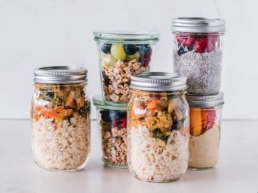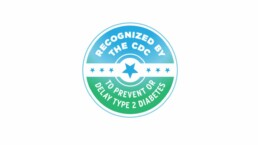By Jenny Fowler, First Mile Care DPP Coach
This is the second in a two-part article.
First Mile Care coaches recommend our Diabetes Prevention Program (DPP) participants eat a diet filled with fresh fruits and vegetables. We encourage folks to stay away from highly processed foods as much as possible and stick to a whole-food base when preparing meals. Shopping the perimeters of the grocery store, and focusing your food purchases in the fresh and frozen produce sections, is generally most supportive of overall good health.
Smarter shopping — fresh, frozen, bulk, and seasonal
- Shop by season. If you want to eat healthier on a budget, instead of buying what you want when you want it, embrace flexibility and buy fruits and vegetables available seasonally in your area since these tend to come at a better price. A local farmer’s market or a food co-op is a great way to educate yourself on the full variety of fresh fruits and vegetables that are in season.
- Shop by sale. I would also encourage experimenting by buying fruits and vegetables that are on sale, even if the item is not something you would usually buy! Encourage yourself to try new options to get more variety into your diet while also saving money. And if shopping at a farmer’s market, keep in mind that vendors may slash prices late in the day to avoid taking perishables back home.
- Fresh vs. frozen vs. canned. Buying canned or frozen produce is another budget-saving tip, and you can also save money by freezing fresh produce you buy in bulk. Food scientists at the University of California, Davis ran a study in 2018 to compare the nutritional value of fresh and frozen produce and were surprised to find no major differences in the overall vitamin content, especially when items are frozen quickly after harvest. Canned produce such as artichoke hearts, beets, corn, garbanzos, hearts of palm, and peppers can liven up a salad or side dish once you rinse them a couple of times to reduce salt.
- Caveat emptor. Be wary of marketing ploys. Store-brand or private label items generally have the same ingredients as their brand-name competitors but cost less. Food label buzzwords such as organic, free range, natural, and healthy are often attached to higher sticker prices. Organic foods do offer less exposure to pesticides and antibiotics, but research shows that you may derive the same nutritional benefits from frozen or fresh, or organic or non-organic blueberries, for example. The Environmental Working Group publishes annual Dirty Dozen and Clean Fifteen lists showing which foods have high pesticide residue so can be worth spending a bit more for organic, versus which are fine to buy non-organic due to low pesticide residue.
- Meatless Mondays? Consuming less meat has the benefit of not only making meals cheaper, but higher in fiber, too. Plant-based proteins such as beans, lentils, nuts, peas, quinoa, seeds, and soybean products like tofu can be purchased in bulk at a discount. If you want to keep animal protein in your diet, limit the number of days you have meat, choose cheaper cuts (enjoy a beef stew!), and use more eggs. Although eggs have shot up in price in the last year due to avian flu-created shortages, they’re generally still going to be less expensive than meat.
- Bulk up! Buying in bulk stores can save you money as long as you buy foods you can store easily, such as canned goods, pasta, rice, and spices. You’ll need to separate meat and poultry bought in bulk into smaller portions before freezing. However, it’s best to avoid buying sweet treats in bulk, to avoid the temptation to consume immediately, simply because they’re in the cupboard or fridge.
Junk temptation
When food shopping, it’s really important that you don’t allow your limited budget to steer you towards cheaper junk foods. The U.S. food supply is flooded with highly processed foods like chips, packaged breads, and soda drinks that may cost less than fresh produce, but which are loaded with fat, salt, sugar and additives. Ultra-processed foods make up nearly 60% of what the typical American adult eats, and nearly 70% of what kids eat, according to a study published in 2022 in the American Journal of Clinical Nutrition.
If the nutrition label contains a lot of scientific-sounding names that you don’t recognize — that’s a clue that the food is highly processed with flavorings, colorings, emulsifiers, and hydrogenated oils used to change appearance, texture, and taste. These foods are designed to be tasty and even addictive, while providing “empty” calories instead of quality calories that satisfy your hunger. High consumption of ultra-processed foods has been linked to obesity, cardiovascular disease, stroke, diabetes, and other chronic illnesses. Moreover, when your body is used to certain foods and you substitute them with lower quality items to save a few dollars, it can wreak havoc on the health of your digestive tract.
A helpful tool assembled by Northeastern University researchers is an online database called TrueFood (currently still a prototype) that lets you browse for common food items and brands to see how processed they are. Foods are scored on a scale from 0 to 100 for comparison purposes.
The last few years have been anxiety-producing for many people, and the inflation of food prices has only added to the burden. I hope these tips help you realize there are successful practices for eating a healthy diet without blowing your budget.
To learn more about how you can benefit from the First Mile Care Diabetes Prevention Program, take the prediabetes risk test and get started today!



